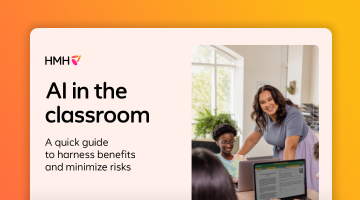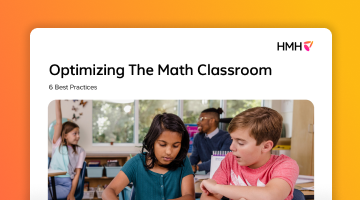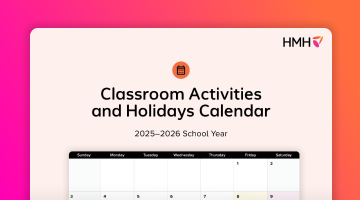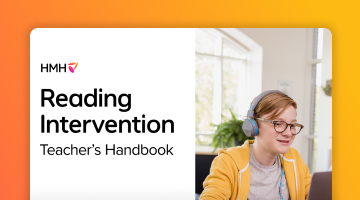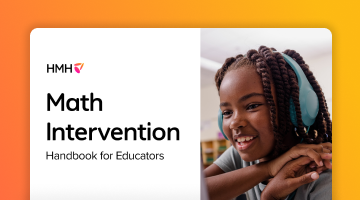
If you’ve ever worked closely with an educator that has devoted their career to working with students learning English, then you surely have heard the use of a variety of terms used to describe students. Depending on the focus of the educator you’re speaking with, and depending on what part of the country they live in, the terminology used to describe students learning English can vary greatly. Some terms you may have heard are: emergent bilingual (EB), English language learner (ELL), multilingual learner (ML or MLL), long-term English learners (LTEL), students learning English as a new language (ENL), newcomer students, and the list goes on.
During a recent lunch with a close colleague and fellow multilingual learner advocate, the topic of identification and current terminology used to describe students learning the English language arose. As my colleague and I chatted about the common terms we’d heard and used throughout the years, we both agreed that the terms English language learners and multilingual learners were by far the most common we’ve encountered. Why do we find these two terms used so frequently, and sometimes interchangeably? Let's explore why is it important for us to understand the difference between MLL vs. ELL and how do we make sure we’re appropriately supporting each group in the classroom.
Definitions of MLL and ELL
Multilingual learners is an expansive term that captures the varied linguistic backgrounds, abilities, learning stages and experiences of students in the education system. The term multilingual learners recognizes that students are developing multiple languages and that students’ proficiency in a language may vary across language dimensions (listening, speaking, reading, and writing).
According to WIDA, “multilingual learners are students developing proficiency in multiple languages.” The term multilingual learner focuses on an asset forward approach. Using the term multilingual learner encourages the understanding that students’ language learning is multifaceted. To honor a student’s full linguistic repertoire, the use of multilingual learner emphasizes what a student knows, rather than what they don’t know.
The term multilingual learner is in sync with WIDA’s Can Do Philosophy. This philosophy reflects the foundational belief that your students have valuable resources they can use to support their own and others’ learning. When multilingual learners are encouraged to use all their ways of talking, being, and knowing to power their thinking and communicating, they engage fully in learning and enrich all learning communities. Research has continually shown that incorporating a strong English language development curriculum into the students daily instructional routines leads to consistent growth and success.
English language learners is a term used to describe students who speak a language other than English outside of school and need supports learning English. They are typically students who are in the process of learning English. ELL is also the term used in the 2015 Every Student Succeeds Act (ESSA) and is commonly used to describe a student whose proficiency in English is not yet sufficient to fully participate in mainstream education. Researchers have found that student’s perceptions of their abilities can sometimes be affected by the terminology used to describe them. Using English language learner may cause a student to focus more on their growth of the English language development rather than their continued growth in multiple languages.
MLL vs. ELL: Why does it matter?
The terms we use to describe students learning English matter. Framing student learning around asset-based pedagogy in classrooms helps to promote well-being, agency and belonging. This approach is in line with the movement we’ve seen in recent years towards the popularity of the term MLL/ML. It is based on the concept that students can be, and usually are, learning multiple languages at the same time as English and each language brings with it a unique set of assets. The term ML helps to capture the rich linguistic and cultural wealth the students possess.
Thinking back to my conversation with my colleague, in a class where all different types of learners are present, it is important that we understand students' linguistic growth as we determine the terms we use. The clear distinction comes as we understand the nuances of each term. English language learner focuses on English language development (ELD) which is the process in which individuals acquire, refine, and master the English language. Multilingual learner refers to students who are developing proficiency in two or more languages. Using the term ML encourages the use of all languages in support of learning. Although education policies tend to describe all English learners as ELL it is important for educators to understand the differences between the two groups of students.
As educators, it is important to be mindful of the strategies we use when supporting our students. Much like the differentiation we provide through our MTSS frameworks, we must also consider the varied linguistic support we provide to our diverse population of language learners. A 2020 position paper from NTCE helps to show how these strategies can play out. A teacher using an ML-focused approach might encourage students to discuss a text in their primary language and then translate their ideas into English.
Ultimately, the goal is that whatever term you choose to use, it is important to ensure that it portrays the student from an asset-based perspective, is concise, and cannot be misinterpreted.
Supporting multilingual learners and English language development
Now that we understand the nuances of terminology, how do we ensure that our instructional practices are designed to support the greatest student outcomes and successes? One of the first steps an educator can take to accurately differentiate between a student’s language learning needs and their academic learning needs. These two needs are not always aligned and in fact can vary greatly, especially when considering a dually-identified multilingual learner, which refers to students who require support for both English language development as well as other specific learning needs noted on an IEP or 504 plan. One example of a dually-identified multilingual learner could be a student who requires English language development support according to their ELD assessments, and also requires an IEP to support their academic growth. Another example could be an academically gifted student who is far above grade level in their content areas yet still requires significant English language development support.
Multilingual learners are not a monolith. Understanding the nuances of how English language development interfaces with student assessed academic needs based on the MTSS framework is how we can truly engage in the full scope of supporting a multilingual learner’s academic success. Academic needs and language development needs must be addressed coherently in order to realize the greatest success in multilingual learner growth.
Empowering students through the language we use
The language we use to describe students learning English carries significant weight. When we use asset-based language that recognizes learners' full linguistic repertoires, we can create a space where students feel respected and welcomed. Although, not one singular term can capture the complexity of every student's language learning experience, choosing terms thoughtfully can help students feel valued and empowered in every language they speak.
***
Address the range of multilingual learners' needs with our English language development programs.
Download our free guide to using response frames with multilingual learners.

